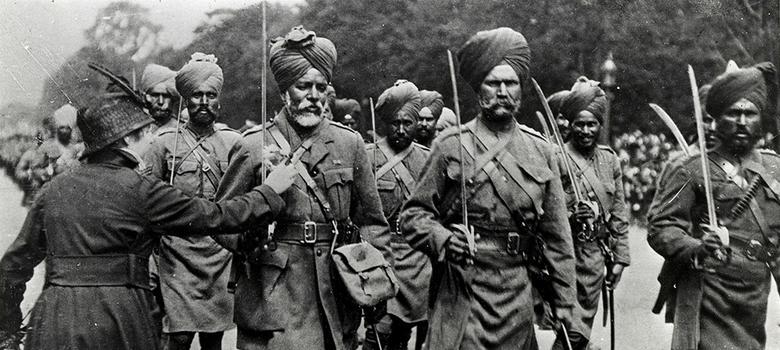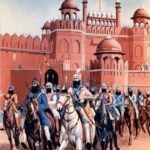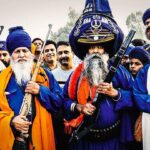When the British Raj was replaced in 1947 by the two nation-states of India and Pakistan, the division between the two was largely based on religion. The area’s sizable Muslim population relocated to Pakistan, while the Hindu population moved to India. With cooperation from Jawaharlal Nehru and Muhammad Ali Jinnah, the British government hired Cyril Radcliffe to map the new borders, and the 1941 Census of India served as the statistical foundation for his conclusions. Based on their religious demographics, certain provinces were simply assigned to one country or the other, frequently resulting in major migratory shifts, but others had a more complicated body politic that belied such a simple assignment. Jammu and Kashmir, for instance, continue to live in a condition of limbo between the two nations, with the population varyingly supporting and disputing claims to sovereignty.
The varied Punjab area, which was home to Muslims, Hindus, and a sizeable Sikh community, was another such province. While not being the majority, the Sikhs had a sizable rural and urban population, and their holy city of Amritsar was there, giving them a unique stake in the region’s future (Hill et al. 2008; Krishan 2004).
The last Sikh Empire, which saw Sikh blood spent in its establishment, upkeep, and defense until it was overthrown by British forces less than a century before, had likewise been located in Punjab. The Sikhs’ visceral attachment to the country encouraged a yearning for self-determination, which could only be achieved through the kinds of willing sacrifice that had distinguished the great Sikhs of the past.
The Sikh community appeared to be divided between those who believed that only a violent revolt could end colonial authority and those who thought that independence would come as a result of devoted devotion to the Empire. These two perspectives could be roughly (and imprecisely) attributed to expatriates living overseas, particularly in North America, and those who are still dwelling in Punjab, the Land of the Five Rivers. The former’s arguments would ultimately prevail, but the latter’s unfulfilled expectations about what the sacrifice of Sikh troops in service to the Crown should justify played a significant role in that success.
This disappointment was the result of a government that many of its constituents regarded in high regard making unfulfilled promises. During the First World War, letters from Sikh troops reveal a strong loyalty to the Crown and a conception of self-sacrifice in war as a political and religious obligation. The language used by troops conveys a sense of allegiance to an imperial power that has been elevated. 1 This would be in stark contrast to the experiences of Sikhs in other countries, who were experiencing the cruelty of life as imperial subjects firsthand. The following will investigate and contextualize both sides of this important dispute using historical documents kept in the Indian Office Records at the British Library. These documents shed light on the rhetorical and symbolic techniques used by each side to develop their positions. I will begin by locating the global Sikh community in their economic and sociocultural context at the beginning of the twentieth century, and then I will use letters written by Sikh sepoys (the term for Indian soldiers serving under the British colonial government) along with official documents and modern news sources to shed light on how World War I served as the crucible wherein mobilizations for self-governance were working out the contours of Sikhism.
Putting Sikhs in a War-Ready Situation
The Times of London informed readers on the eve of World War I that “The Sikhs were neither a race nor a sect as enlisted in our Indian army. In addition, although having Hindu ancestry, they could not be classified as a caste (Times History of the War 1914, IOR/Mss Eur/F170/8). The Times’ rejection of Sikhs as a religious sect was more indicative of the doubt around the existence of Sikhs as a distinct religious group distinct from Hindus than it was a result of ignorance of the spiritual teachings that unified Sikhs. Guru traditions were long and widely regarded as falling within the scope of “Hinduism,” but the boundaries of the religion were still being defined.
For the Sikhs themselves, the distinction was even hazier because, in addition to being inconsistent with traditional spiritual understandings of the Indian subcontinent, the modern, Western concept of “religion” and the idea of a discrete set of practices that fundamentally separated one group from another were also at odds. The either/or dichotomy should not be taken for granted, as Harjot Oberoi so eloquently puts it: “The religious life of the people, particularly in the pre-colonial period, was defined by a continuum. Several communal identities overlapped and were intertwined (Oberoi 1994, p. 12). The Sikhs were only accepted into colonial society through a series of covert and overt talks with British expectations.








